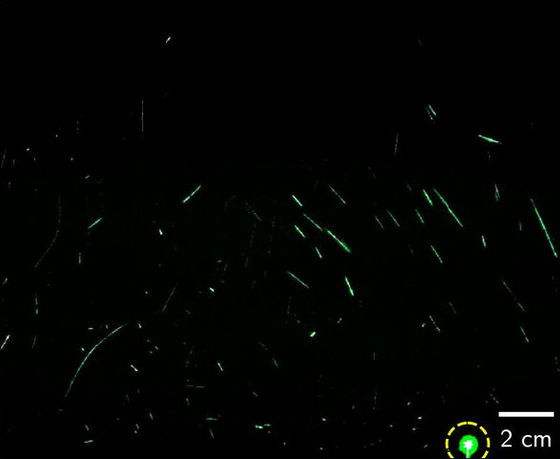When you speak loudly, more than 1000 flying shots containing the new coronavirus are released from your mouth per minute

The infection mechanism of the novel coronavirus infection (COVID-19) is not completely clear, but '
The airborne lifetime of small speech droplets and their potential importance in SARS-CoV-2 transmission | PNAS
https://www.pnas.org/content/early/2020/05/12/2006874117
High SARS-CoV-2 Attack Rate Following Exposure at a Choir Practice — Skagit County, Washington, March 2020 | MMWR
https://www.cdc.gov/mmwr/volumes/69/wr/mm6919e6.htm
Coronavirus spread: One minute of talking releases 1,000 droplets
https://www.inverse.com/mind-body/louding-speaking-spray-coronavirus-droplets
COVID-19 is believed to spread by spreading 'flying' such as saliva and runny nose in the air. In order to investigate how much such flying is emitted by conversation, a research team led by Philip Anfinrud of the National Institutes of Health said, `` By irradiating a laser beam, the flight is visualized and the flight is emitted during conversation. We performed an experiment called 'Measure the number of eyelashes.'
As a result of this experiment, it was found that when you speak loudly, thousands of shots were emitted per second. Among them, it is said that more than 1000 flying particles with a diameter of 10 to 100 micrometers, which may contain the new coronavirus, were released per minute. Below is an example of a flight visualized by a laser beam.

How long each individual fly stays in the air depends on its size, which varies in air and in air. Immediately after being released from the mouth, this study shows that the fly starts to become smaller, shrinking from 20% to 34% of its original size. However, both sizes were found to stay in the air for 8 to 14 minutes. Please note that this study was conducted in a closed environment with air stagnation, so different results may be obtained in an open space with air convection. However, the research team points out that 'the flight distance of the flight in the open space is extended and there is a possibility that it will spread widely in the air.'
In addition, on May 15, 2020, the Center for Disease Control and Prevention (CDC) announced a case in which it is thought that 'vocalization spread COVID-19'. This case relates to the '2.5-hour chorus practice' held in Skagit County, Washington, in 2020, when one out of 61 practice participants was infected. After practice, 32 people were diagnosed with COVID-19 and 20 were suspected of being infected, resulting in the spread of the virus to a total of 52 people (87% of the total). Of the infected, 3 were hospitalized and 2 died.

The results were reported by the CDC as 'in addition to being closer during practice, singing may have promoted the infection.'
The Inverse, which reported this research and case studies, said that 'mask' is effective as a countermeasure against flying. On the other hand, 'it may be difficult for someone who speaks out loud to wear a mask,' he said.
Related Posts:
in Science, Posted by darkhorse_log







